We cannot imagine mayors without town halls, parliamentarians without parliaments or ambassadors without embassies. But when it comes to the political engagement of regular citizens, (almost) nobody seems to care about the role and the potential of space. Big mistake!
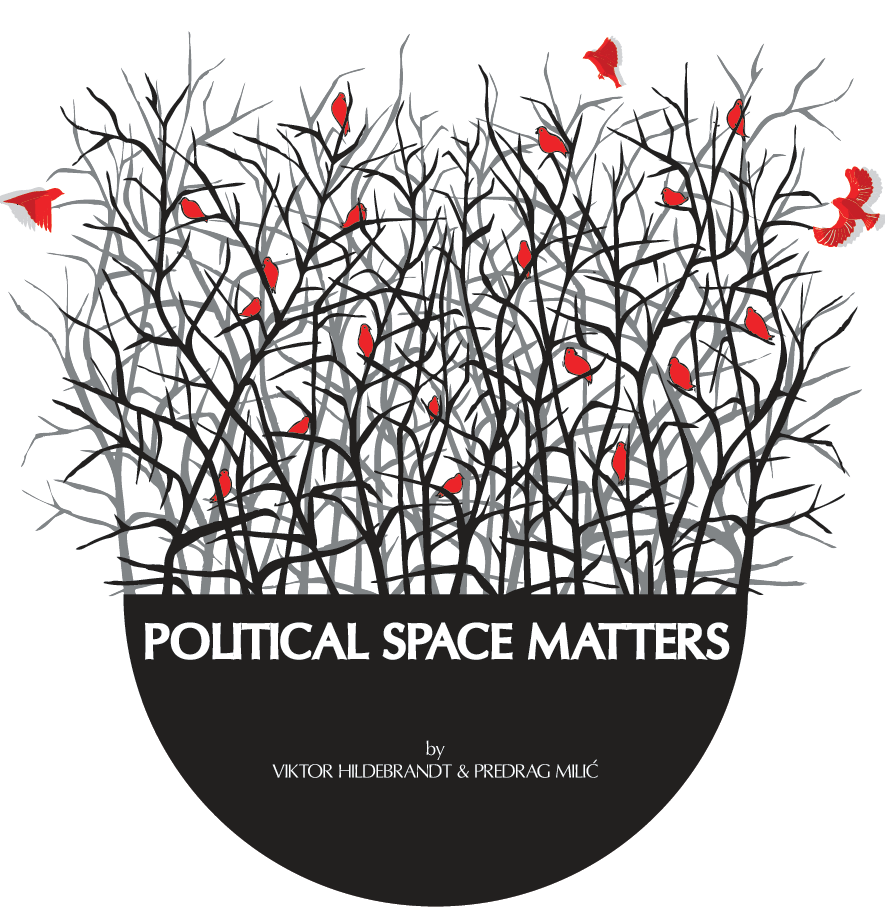
In February 2016 Yanis Varoufakis took the stage of the Berliner Volksbühne and launched DiEM25, the Democracy in Europe Movement that aims to “democratise” Europe until 2025. His speech, which he delivered not as a professional politician but as a regular citizen, quite literally marked the appearance of a new actor on Europe’s political stage.

The movement’s goals are very noble and thousands of members who joined overnight prove that many Europeans are indeed longing for a more democratic continent. What really caught our attention about that evening, however, was not what Varoufakis said but where he chose to say it: Why a theatre stage? Why this stage? Was it a good or a bad choice? Obviously it must be assumed that Varoufakis could have spoken in many other places and, moreover, that he consciously decided to speak not anywhere but in the Volksbühne. Why?
The reasons are quite evident: Berlin, to begin with, is one of Europe’s political hotspots. Here, in the vicinity of Reichstag and Kanzleramt, the media would surely be attentive to what Varoufakis had to say. Further, the Volksbühne is an established institution and associated with certain political messages. Its name suggests that this particular stage is not only one for the people but also one that belongs to the people. Due to the physical setup of the theatre all eyes rested on Varoufakis when he spoke. The acoustics were excellent, many people could attend the event, the atmosphere the space creates fit the character of the event and so on.
By and large, it seems that the environment in which he appeared was absolutely relevant to Varoufakis. Space mattered. This, of course, is no big surprise since, after all, we are surrounded by spaces that are specifically designed for, and dedicated to all kinds of different activities. In our cities we find spaces to eat, relax, pray, party, work, shop, study, read, swim, play, mingle … and in all these cases space matters quite a lot. The same seems to be true for politics. In fact, political spaces are so important that we can barely imagine mayors without town halls, parliamentarians without parliaments or ambassadors without embassies. Politics and space are related. More precisely, we have reason to assume that the immediate environment of political actors affects their ability to act, their actions and the results of their actions.
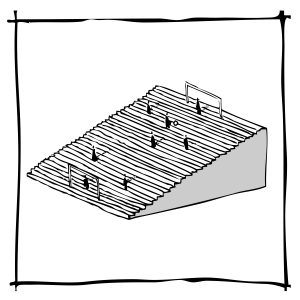
Just as some football fields, cafés, theatres, cultural centres, parks, schools, hospitals etc. are better than others, we also have to assume that some political spaces are better than others. But what characterises good political spaces? Why is it, in other words, that some spaces offer a better environment for acting politically than others? And how can we tell the difference between the good and the bad ones, the more and the less appropriate? If our political initiative, engagement and participation depend, at least to some extent, on the surrounding in which we act, then these questions are relevant for literally everybody who is or would like to become politically active!
Now it may be objected that the answer to these questions is only too obvious, just as (in retrospect) it seems almost self-evident that Varoufakis launched DiEM25 in the Volksbühne. By and large, it may be claimed, the prime examples of political spaces, especially town halls and parliaments, are so similar to one another all around the world and have changed so little over the centuries that their similarity and continuity cannot possibly be accidental. These must be good political spaces. Consequently, it may be argued, any evaluation should be guided, and any new design should be inspired by the existing icons of political space. Hence there would be no need for further investigation.
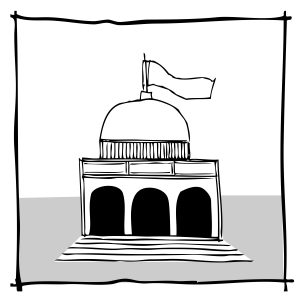
To some extent, this objection is justified. We agree that many – though by no means all – of the existing political spaces are suitable environments for political actors. But this fact does not render a systematic analysis of why they are good superfluous.
On the contrary, current developments in the discussion about democracy make such an analysis practically unavoidable: “Democracy” belongs to the class of words that should be used very carefully. But it seems safe to say that government based on the rule by the people must rest on the political engagement and participation of ordinary citizens. Until recently it seemed that “participation” is a synonym for “voting” and that “engagement” always refers to involvement with protest-movements, lobby-groups or political parties. Today however there is a widespread demand for “more” or “real” or “better” democracy. It is uttered not only by the members of DiEM25 but can also be heard in parliaments and town halls, at universities and dinner tables; we read about it in scientific journals and daily newspapers alike. On the other hand, even those who, for whatever reasons, are sceptical towards systematic political changes do forecast a redefinition of the relation between citizens and the state as a consequence of a significant decline in voter participation and party-memberships which is visible, at least as a tendency, all over Europe.
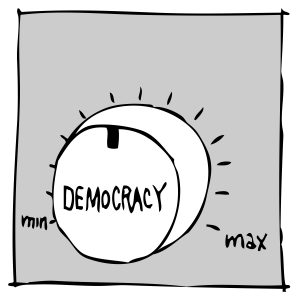
Consequently, the members of countless civic initiatives, politicians, scholars, journalists and others are discussing how the political institutions, processes and mechanisms in Europe could be improved in favour of democracy. Obviously, there is no consensus about what should be done. Some claim that we should abolish professional politicians, political parties and most if not all societal institutions entirely. Others suggest a reform of representative democracy from the inside. Many or even most of us are simply not sure; perplexed by the incredible theoretical and practical complexity of the question at hand. In this situation, the only thing that almost everybody can agree on, it seems, is that more citizens should (or at least will soon) become engaged in political affairs more directly.
If political space matters – an assumption that everybody who has been politically active will probably confirm – then this can only mean two things: Either we have to adapt the existing political spaces significantly or we have to create new environments, specifically designed for the engagement and participation of ordinary citizens in public affairs. And insofar as citizens already become more engaged in political affairs, which, at the moment, is primarily happening on the urban scale, we have to be able to evaluate the spaces they are using.
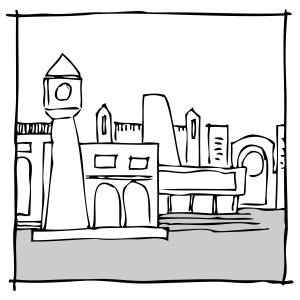
We cannot – and that is the crux – simply refer to town halls and parliaments as the right political spaces because, conceptually speaking, they are designed to exclude rather than include ordinary citizens. In fact, it is their most fundamental characteristic that only elected representatives can use them as political actors, at least in the (narrower) sense of participating in the government of public affairs. Hence if we agree that “real” democracy demands that also ordinary citizens can participate in political affairs, then the environment in which they act cannot be the same environment that currently excludes them. To be sure, this does not mean that a good political space for regular citizens will have nothing in common with a good political space for full-time politicians. On the contrary, we have good reason to believe that many aspects will be similar. It just means that these two environments cannot be exactly the same because in a certain sense they are opposites.


Thus we have to think about what it actually is that characterises good political space in order to design appropriate environments where the “general rearrangement of the way in which we think about the relationship between citizens and politics” (Giovanni Moro) that currently so many Europeans hope for and anticipate, can become reality.
Under these circumstances it is quite surprising that almost nobody in the academic realm seems to be interested in political space matters. While it has been acknowledged repeatedly that the goal of political participation is the creation of spaces for deliberation, it has not yet been investigated what actually characterises suitable spaces for deliberation. A little pointedly we may say that everybody talks about political change, but (almost) nobody talks about political space.

The study Political and Civic Engagement – Multidisciplinary Perspectives (2015) is the most telling case in point that one could possibly find: The editors claim to “provide a comprehensive overview of current understandings of the factors and processes that influence citizens’ patterns of political and civic engagement”. But in 26 academic papers which together fill roughly 600 pages and which were written by 40 contributors from different European universities, we could not find even a single reference to space as a factor regarding the political participation of citizens.
To be sure, some authors have made it very clear that political space matters. But only very few of them actually follow up on this idea. In The Down-Deep Delight of Democracy (2013), for instance, Mark Purcell highlights that “we need ways to create physical space for democracy.” But since he is focused on the “interior struggle” of becoming democratic and not on political interactions of citizens, and since he is more interested in overcoming political representation than in creating new political institutions, Purcell does not distinguish between appropriate and inappropriate political spaces and he does not say anything about what makes them what they are. Instead, he repeats the mantra “Give them space” as if just any space would do.
And the small group of authors who have gone further, have yet not gone far enough. We couldn’t find a single study that would systematically analyse the significance or the characteristics of good political spaces.
Why is the importance of political space so commonly overlooked, forgotten or ignored? It seems that prejudices, disciplinary boundaries and even a very reliable practical intuition are in the way of a systematic discussion of the issue:
 We tend to believe that space is always political because questions about the borders, ownership and utilisation of space are so evidently political in nature. But to discuss space as a political concern is not the same as to discuss space as a locus of politics.
We tend to believe that space is always political because questions about the borders, ownership and utilisation of space are so evidently political in nature. But to discuss space as a political concern is not the same as to discuss space as a locus of politics.
Even if we agree that space is not political per se, we are still inclined to believe that any space can be political. Whether we think of parliaments and city halls, the public squares and boulevards of our cities, coffee houses and universities, lamp posts during electoral campaigns, Rosa Parks who remained seated in a bus or Willy Brandt who knelt down in Warsaw, the battlefields of history or even the meeting rooms of companies – every space seems to be at least potentially a space for political actors. Yet we have to distinguish between spaces that attained to political relevance because something happened to happen there that was politically relevant, and spaces where people act politically. A battlefield for example is not a political space. In fact, it only becomes relevant in political terms when all genuinely political forms of action are exhausted. If we would seriously claim that battlefields are political spaces, then we should not be surprised if politicians suddenly decided that arm wrestling is a proper way to settle their disagreements. And even if every space was potentially political, this would not imply that every space has the same potential for politics to be at home.

Those who most appreciate and depend on suitable spaces for political action often seem to find them intuitively, just like Yanis Varoufakis. But since they are politically active, there is little time for theoretical reflections about the spaces they are using.

Questions of political space lie between academic disciplines. Political scientists, it seems, often do not concern themselves with political space because the topic is too closely related to the field of architecture. Architects, on the other hand, are seldom confronted with political spaces simply because such spaces are often very durable; and if they are, their work is related to spaces for full-time politicians. Urbanists – this is at least our impression after a two year master programme in the field – seem to be too busy thinking about the political struggle over space to really pay attention to the spaces of political action.

Since political participation is typically initiated from above and often lasts only for a couple of days or weeks, we tend to understand citizens as guests in the political arena. Citizens always seem to follow an invitation. Since they never appear as hosts, it does not even occur to us that they might need or benefit from spaces that are not just provisional, but instead prepared with some measure of diligence, not to mention permanent political spaces that would actually be dedicated to ordinary citizens only.

Though it has been claimed repeatedly that the nation state is losing political importance, it is still the standard unit of political thinking. Hence when they hear the words “political” and “space” in the same sentence, most people immediately think of national borders. We may of course look at an entire country as a political space, but we should not overlook the influence of the immediate environments of the actors. The standard units for thinking about political space – considering also our focus on the participation of ordinary citizens – will be rather the room, the building or perhaps the neighbourhood. To think of space in such terms makes our whole endeavour much more concrete.
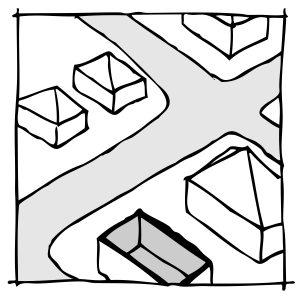
These and other reasons may explain the widespread ignorance towards political space in both the academic and the political realm – but they are no excuses. Together with the influence of citizens on political affairs, the relevance of appropriate political spaces dedicated to these citizens increases. And we – the European urbanists – are the very first in line who should care, speak and write about the importance of political space because our research lies between the architectural and political sphere, because it combines awareness for space and for politics. We have been focused on the political battles over urban space for good reasons. Still, it is time for us to also pay attention to the urban spaces where these battles are being fought. We have to investigate whether or not and in which exact sense the spaces that are currently available to ordinary citizens for participating in public political affairs are really appropriate environments for political actors. And we should develop proposals and designs for improvements.
This text (or at least most of it) is an excerpt from the book Political Space Matters, a joint project of Predrag Milic and Viktor Hildebrandt, both alumni of the 4CITIES programme. The book explores the relationship between particular urban spaces – a room, a building, a neighbourhood – and politics or, rather, political action. In order to figure out what characterises appropriate spaces for political action, we analysed the writings of Hannah Arendt, who focuses not on democracy as a form of government, but on political action as a distinct form of human activity. Our analysis produced a set of 26 principles of good political space that can be used to evaluate and design political spaces. Moreover, we analysed 6 particular urban spaces with regards to their potential as political spaces.
We invite you to read all about it here. Still, our work was just a first iteration of research and we are happy to continue working on the topic in both theory and practice. So if you want to join us or connect us with people who might care about this stuff, please don’t hesitate to get in touch with us! Just write to or


